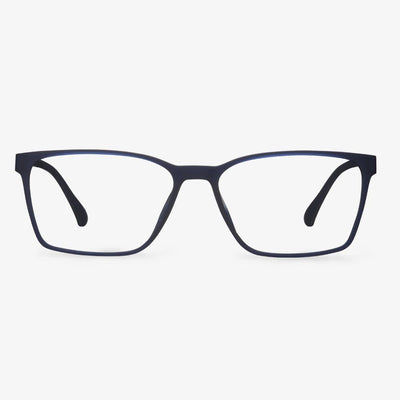Data obtained by computer optometry alone may not be accurate.
The first thing is to go to the optometry store, or the hospital to do a glasses degree test, namely to get single optometry. The precision computer optometry has errors, and computer optometry is only used to measure separately monocular degrees. What we need is the best visual effect of the binocular match, so the exact prescription needs to be carefully confirmed by comprehensive optometry. Optometrists will ask everyone to try on the insert lenses again, and even need to repeatedly try on several degrees of lenses, in order to finally determine which degree is the most appropriate, because even the professional optometry data is only a rough range, only based on the data of glasses is not necessarily suitable for their own. You can use a focometer to measure the actual parameters of the glasses you are wearing. If you are still unsure of your prescription, it is recommended to fax, mail, or mail your prescription to the merchant when placing your order.
You need to buy real titanium frames.
In general, titanium frames range from hundreds of yuan to thousands of yuan. Many store counters display frames called pure titanium, but if you look closely at the labels, there is no indication of the titanium content or composition. When you buy titanium frames, check if they are titanium or pure titanium. In reality, pure titanium glasses frame refers to the composition of titanium more than 99%, so you can use the weight to see if it is pure titanium. If the frame is heavy, it is definitely not pure titanium.
Who should wear low bridge glasses?
According to the website of the American Optical Association, low-bridge glasses are for people with a low bridge of the nose (when your nose is at or below the pupil level), a wide face, or high cheekbones. This pair of glasses fit anyone with a low nose. If you have a tall bridge, it's great to have a bridge near the eyebrow line. If you have a low bridge of the nose, a more curved brow or a lower bridge of the nose frame is a better choice. Because the dimensions of the bridge are measured from the inside of the frame, a thick-sided frame with the same bridge dimensions and a very thin frame will not fit. It may actually be too small. Because it allows for extra edges.
The origin of aspheric lens
The Visby glasses, unearthed in Gotland, Sweden, are the earliest aspheric lens found. The Vikings in the 11th century used it as a magnifying glass, and some of the best ones were made of silver, making them look like handicrafts. In 1667, Francis Smethwick grinds the first high-quality aspheric lenses and presents them to the Royal Society. That's a telescope with three aspheric elements. In 1956, Elgeet, which originally designed and manufactured optical instruments for the U.S. Navy, produced the world's first mass-produced aspheric lens for photography (Golden Navitar 12mm F1.2) for a 16mm film machine. Today, aspheric lenses are found in everything from tall telescopes to missile guidance systems to camera lenses. In the glasses we wear, the aspheric lens is familiar to consumers.
The material of the nose pads
There are many differences between silica gel and PVC materials. For example, silicone can pass ROHS certification and is environmentally friendly. Silica gel is soft and feels good, while PVC products are rough. Silica gel products are soft, while PVC products are hard. Silica gel products are more flexible, but PVC has no toughness. Silica gel products are usually made to be more transparent. Glass frames made of plate material and TR-90 material, are relatively not heavy and non-allergic. Typically, the TR90 frame is cast to form a nose pad attached to the glasses ring. As the plate frame is cut out from compressed materials, the plate frame with a nose pad is usually injected into the nose pad after the frame is made.
What color lenses are good for driving?
The optometrist reminded us that it is not advisable to choose pink, purple, light blue, and other colors with obvious decoration effects for driving sunglasses. These colored glasses basically cannot protect the eyes. In addition, they may change the color and cause chromatic aberration. Generally speaking, you should wear brown and gray glasses when driving. The brown lens can filter out a lot of blue light, which can effectively improve visual contrast and clarity. The gray lens can absorb any color spectrum in a balanced manner and will not produce obvious chromatic aberration after wearing.
Nowadays, the colors of lenses for sunglasses on the market are dazzling. Many people only consider whether they look good when choosing colors, and do not pay attention to the impact of lens colors on vision. When choosing sunglasses, we should not only pay attention to their decoration but also pay attention to their protective function for the eyes. We should avoid using blue lenses when driving because it will make us unable to distinguish the color of the traffic signal lights.
How to test a blue-light lens?
When the glasses are placed in front of a display screen or watched in the environment with LED light, the blue-light-blocking lenses reflect blue lights, while the non-anti-blue lenses do not reflect blue lights. Of course, there are a small number of blue-blocking glasses that reflect green lights.


















































